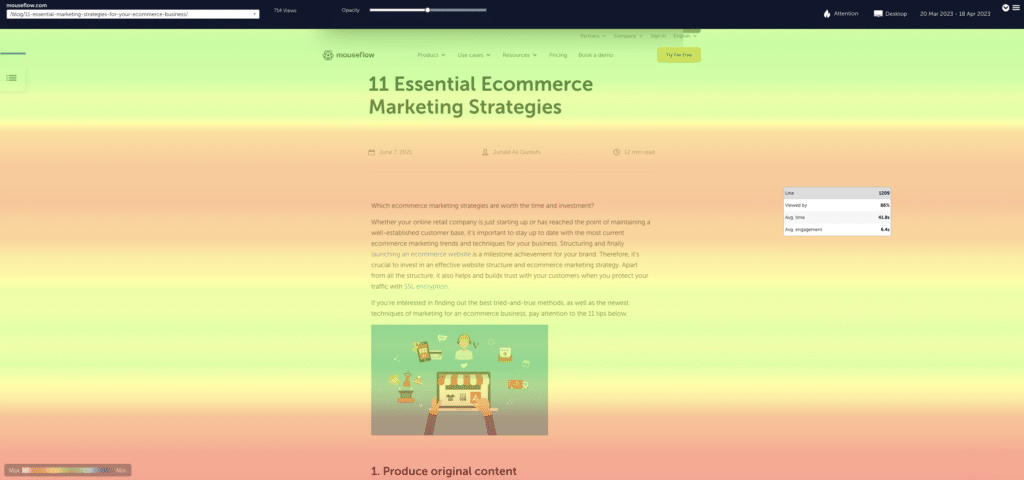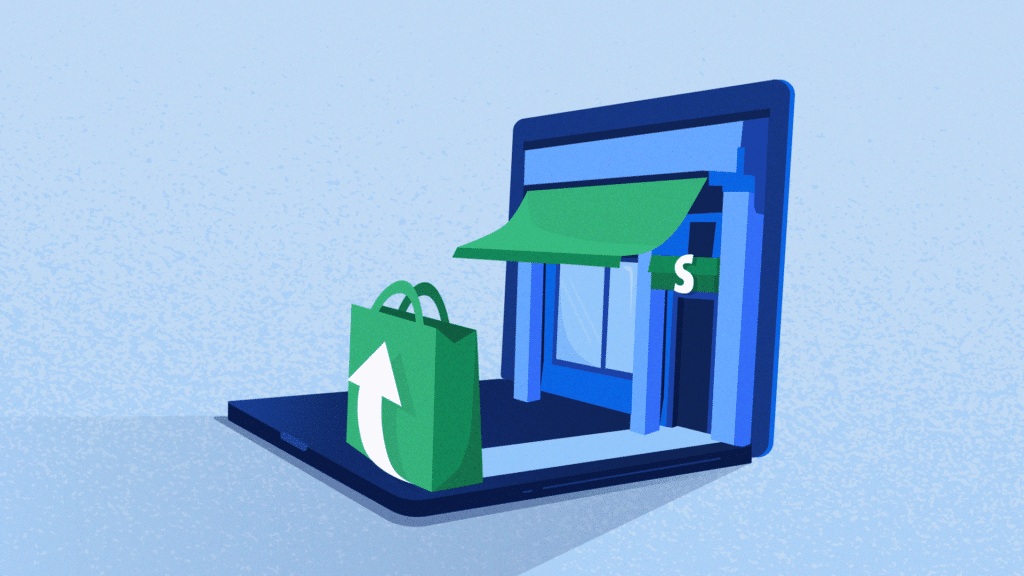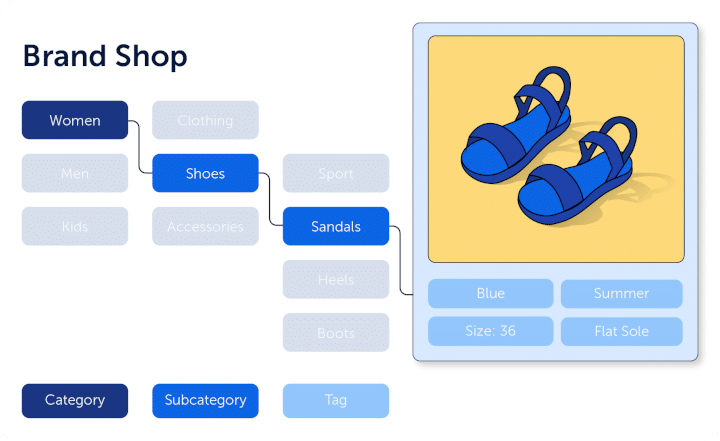Shopify is one of the most popular eCommerce platforms, offering a powerful set of tools for businesses of all sizes. However – and that’s something you’ve certainly heard a lot if you’re into building Shopify stores, but bear with us – simply having a Shopify store is not enough to drive sales and increase revenue.
To succeed in the highly competitive world of eCommerce, you need to optimize your store for conversions. In this article, we’ll explore some Shopify conversion rate optimization (CRO) tips and tricks to help you improve your store’s performance.
2. Optimize Your Product Pages
Navigation is only a means of getting to the most important pages of your Shopify website – product pages. Okay, they are the second most important after checkout, but you get the point. Product pages are the core of your eCommerce store, as they are where customers make purchasing decisions.
To optimize your product pages for conversions, you need to focus on several key elements.
- quality product images. Make sure they are hi-res, there are enough of them, and they showcase different angles and perspectives. At the same time, make sure they load quickly and are optimized for mobile devices.
- clear and compelling product descriptions. They should provide detailed information about the features and benefits of your products, and use persuasive language to encourage customers to make a purchase.
- social proof. Yes, we are talking about all the stars, reviews, ratings, likes, and other of their kind. They help build trust with potential customers and demonstrate the quality of your products. Make sure to be transparent though: if there’s a negative review, don’t delete, but rather try to resolve the problem and ask the user to update the review.
You can also use attention heatmaps to see whether those lengthy product descriptions pay back. Also, here’s a simple trick you can use: If you break your product description into a bullet list, an attention heatmap will give you an idea about which of the features are the most important for the users. Also, a list of bullet points just naturally attracts attention.

3. Optimize Your Checkout Process
It hurts the most to lose visitors at the checkout stage. Obviously, you’ll be losing some either way, but you should aim to minimize their numbers. And for that, your checkout process should be as easy, streamlined, and as friendly as possible, with clear instructions and minimal steps.
So, here’s what you could try to checkout to increase conversion rate for a Shopify store.
- Providing clear instructions. People need to know what they are supposed to do at each step. Ideally, it should be obvious, but people are different, so make sure you explain it thoroughly.
- Minimizing the number of steps. People drop out at each step, so the fewer – the better. Also, make sure to show how many steps are left before finishing the checkout process.
- Offering a variety of payment options. Shopify supports pretty much everything – credit cards to PayPal, Google Pay to Apple Pay, and local options like Klarna or Multibanco. Consider what’s popular in your target audience’s locale and implement those options. Why do you need these? Because different users have different preferences, so having their preferred payment method helps increase the chance of finalizing the deal.
Read more about optimizing the checkout process to increase conversions.
4. Use Exit Intent Pop-ups
Many consider having intrusive pop-ups a no go, but it doesn’t really apply to exit pop-ups in eCommerce stores when the user is about to abandon their cart. As intrusive as they may be, exit-intent pop-ups still help retain customers and increase conversions. These pop-ups are triggered when a user is about to leave your website, and what they do is offer a special promotion, discount, or incentive to encourage them to stay and make a purchase.
Yes, some users would quickly get the idea and exit on purpose to get the discount, but you’re still happy to sell to them even at a lower price, aren’t you? However, it may still be worth considering firing this pop up just once per user.
5. Monitor User Behavior with Heatmaps
Heatmaps can be a valuable tool for understanding how people interact with your store. And for Shopify CRO, they are just pure gold. By analyzing them, you can optimize your navigation, product pages, and checkout process for maximum conversions. Yes, all that stuff we’ve been discussing above – but now based on factual evidence and data.
Tools like Mouseflow can help you build all kinds of heatmaps, be it click maps, scroll heatmaps, or attention heatmaps. With those, you can see exactly where users are clicking, how far they are scrolling on each page, and which parts of the pages they stay the longest on. This can help you identify problem areas and optimize your eCommerce website accordingly, or put CTAs in the right spot. Read this to learn how to read a heatmap if you are having trouble understanding what to do with them.
For example, RAINS, a Danish rainwear company, used Mouseflow to analyze user behavior on their website. Mouseflow’s heatmaps and session recordings allowed RAINS to find friction areas on their website and helped eliminate them, which contributed to a conversion rate improvement of more than 10% for their online store.
Mouseflow has an integration with Shopify that allows you to install it in a matter of seconds.
6. Personalize Your Store
Personalization is a powerful tool for increasing conversions and building customer loyalty. Using customer data, you can personalize your product recommendations and promo campaigns.
According to Shopify, studies show that 80% of customers expect the experience to be personalized, and 63% of customers are more likely to make a purchase from a website that offers personalized recommendations. That alone should be enough to consider personalization a must have for any modern Shopify store.
To start somewhere, you can try out Shopify’s built-in features such as, for example, personalized product recommendations. Additionally, tools like OptiMonk and Shopify apps like LimeSpot or Personizely can help you with personalized pop ups. And you can also try personalizing your email marketing campaigns, which helps get users back to your store and improves retention.
Personalization is always based on data collection – you’ll need info such as the user’s gender, age, location, and previous purchases to make your optimizations work. So make sure that you explicitly warn the users about collecting their data and comply with all the relevant data privacy laws.
7. Use A/B Testing and Always Look at Analytics
A/B testing is essential for conversion rate optimization because it allows you to experiment with different variations of your website to see what works best. You can test different elements on your product pages, checkout process, and promotional offers to see which ones generate the most conversions.
To get the most out of your A/B testing efforts, it’s crucial to use analytics tools such as Google Analytics or Mouseflow. These tools help you track user behavior, build conversion funnels, and better understand the results of your A/B tests. With the data they provide, you can identify which elements of your website are causing friction for your visitors and make adjustments accordingly. Analytics can even help you improve your SEO results.
Even if you decide to implement a change without A/B testing, you should still monitor the analytics and consider factors such as website friction. For example, if you notice that users are dropping off at a particular stage of the checkout process, you can make adjustments to reduce the friction and improve conversions.
Conclusion
Opening a Shopify store is a great start, but making it actually work takes a lot of time and effort. Don’t worry, as it’s a lot of fun as well! By optimizing product pages and checkout, including popups to lower the cart abandonment rate and personalizing your store for each customer, you’ll create a better user experience. And that will ultimately result in increasing the conversion rate of your store.
So, good luck with that interesting and insightful journey, and don’t forget to test and verify each and every experiment that you make. By using analytics tools such as Mouseflow and running A/B tests you can understand the users better and make data-driven decisions. And for a store, that is the only kind of decisions to ever be taken.
Learn more about using Mouseflow for eCommerce.


